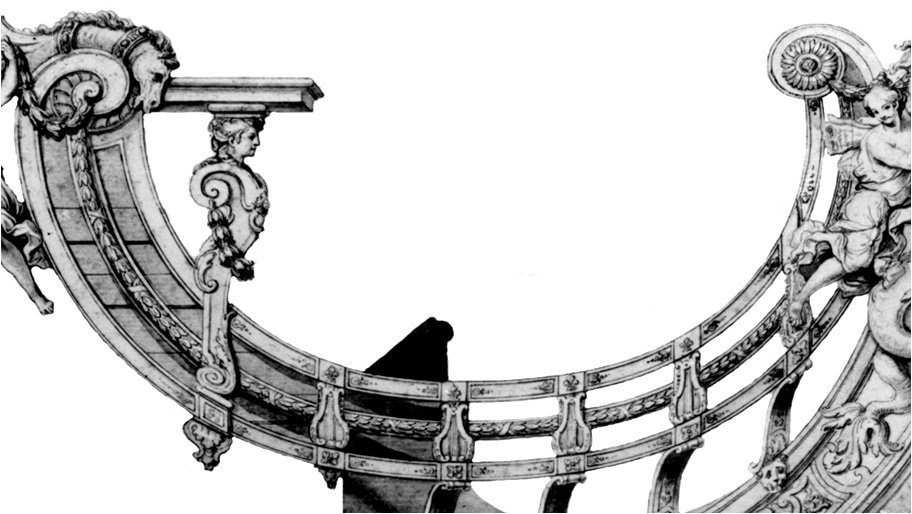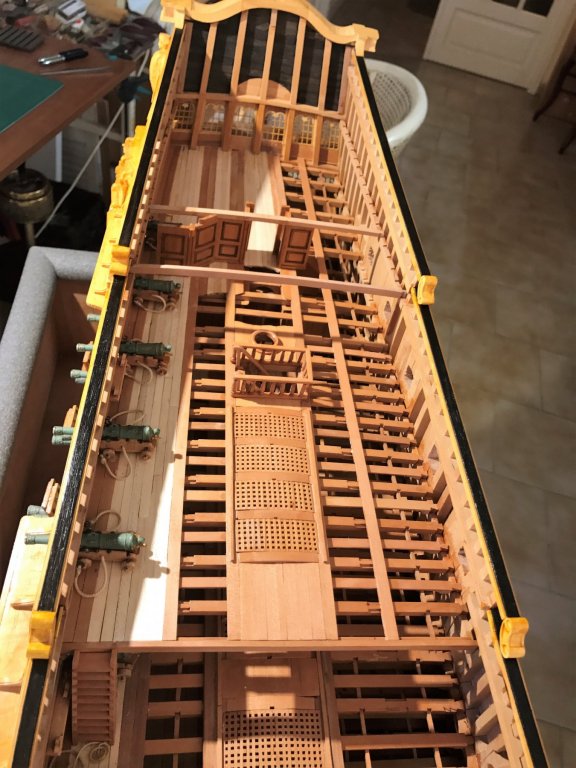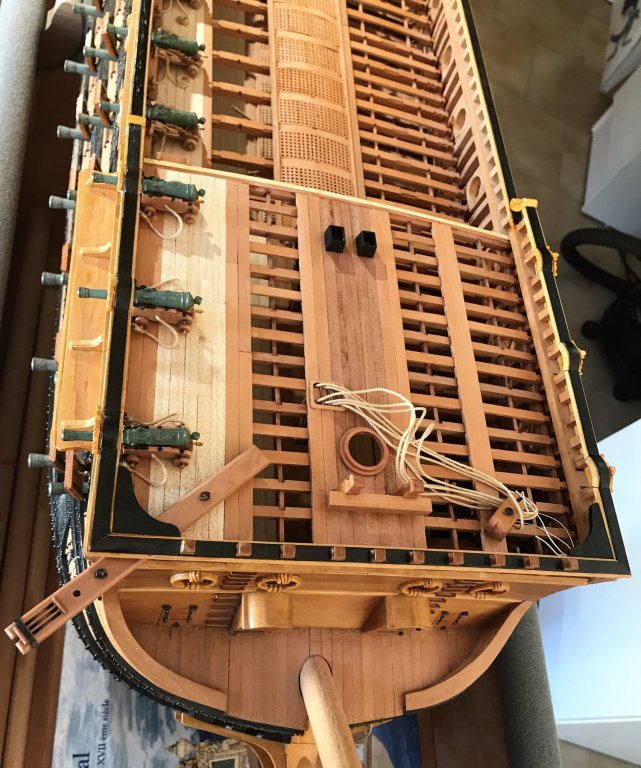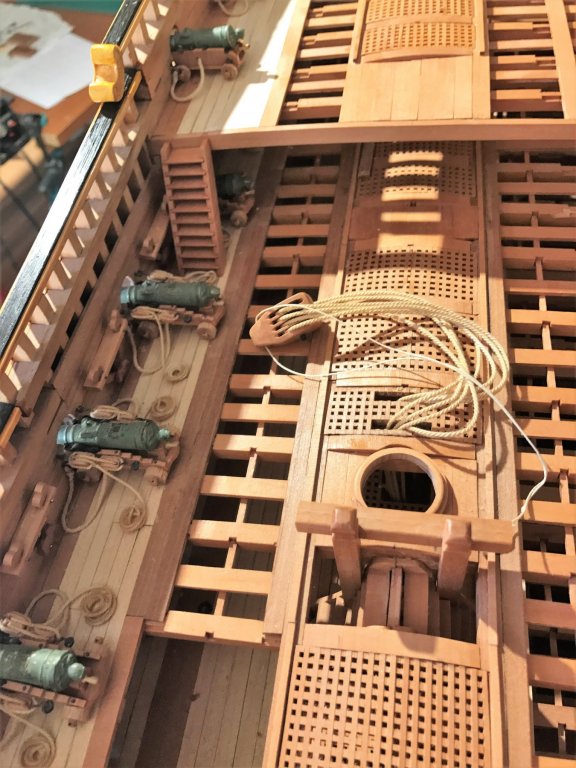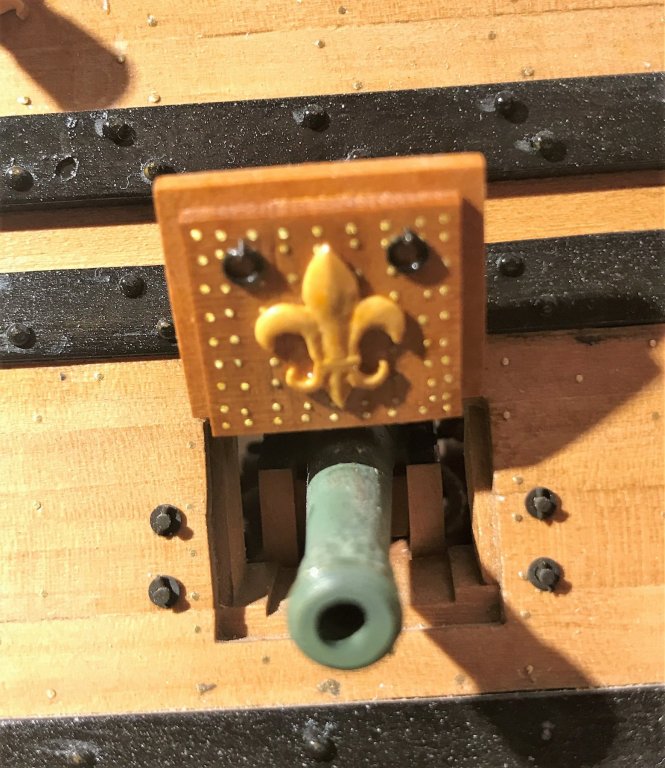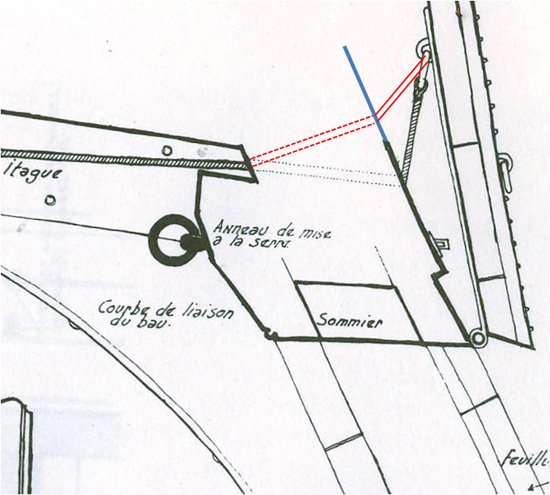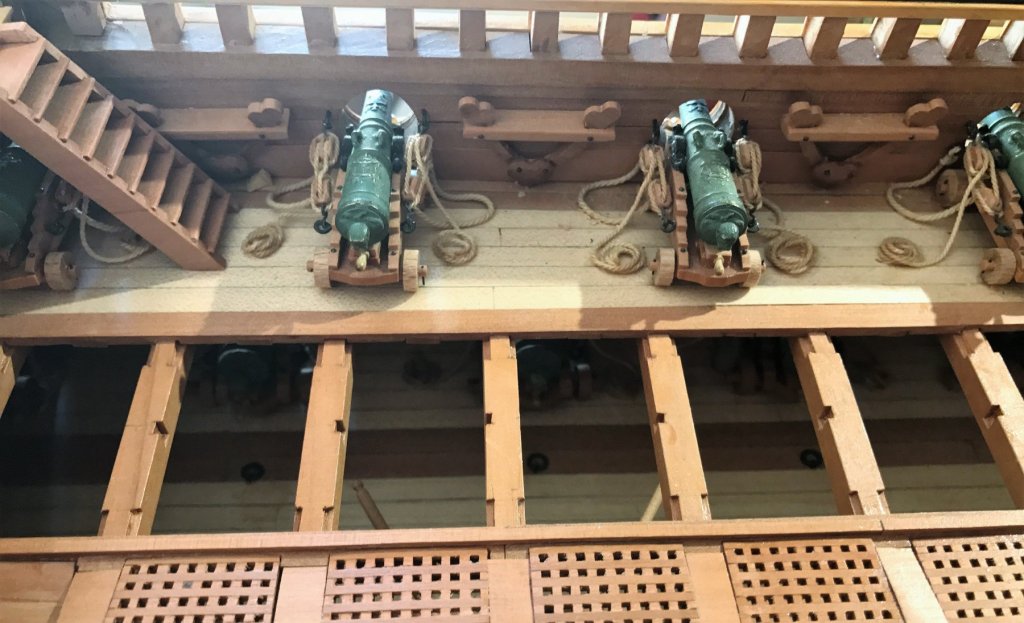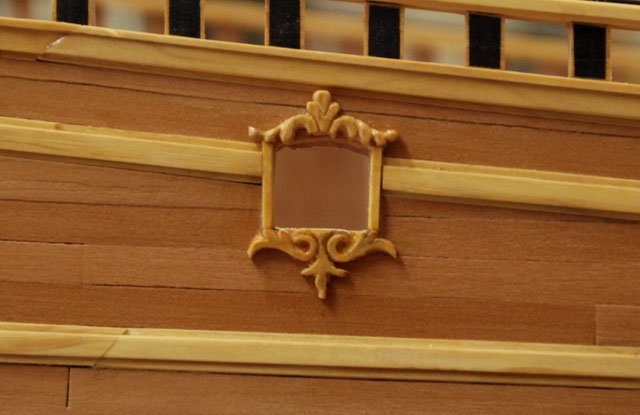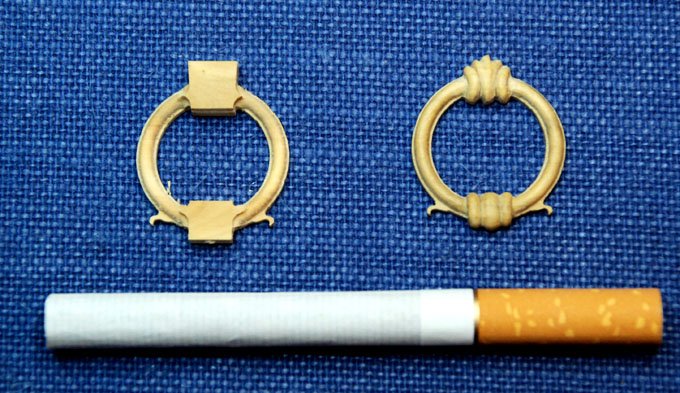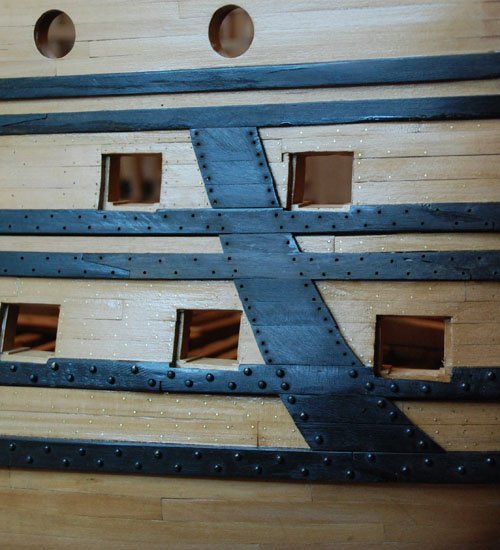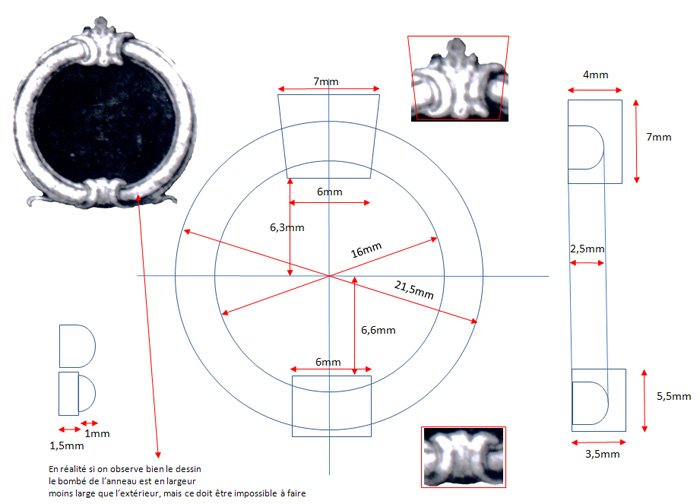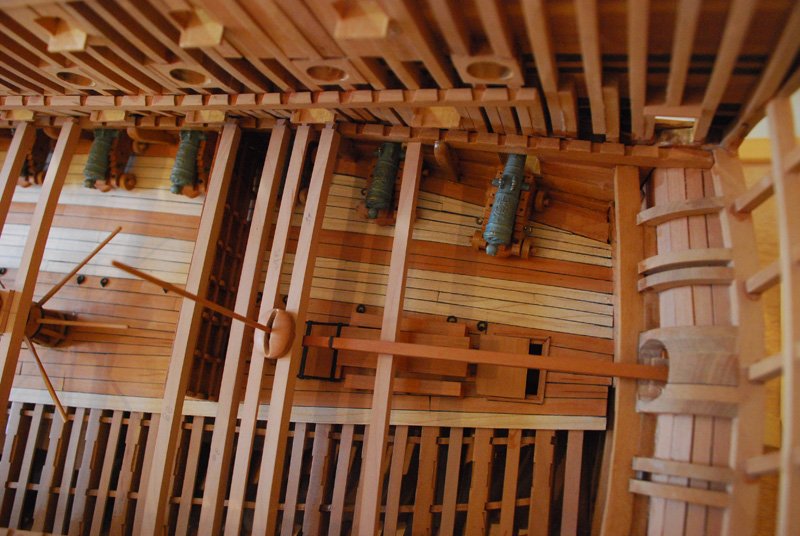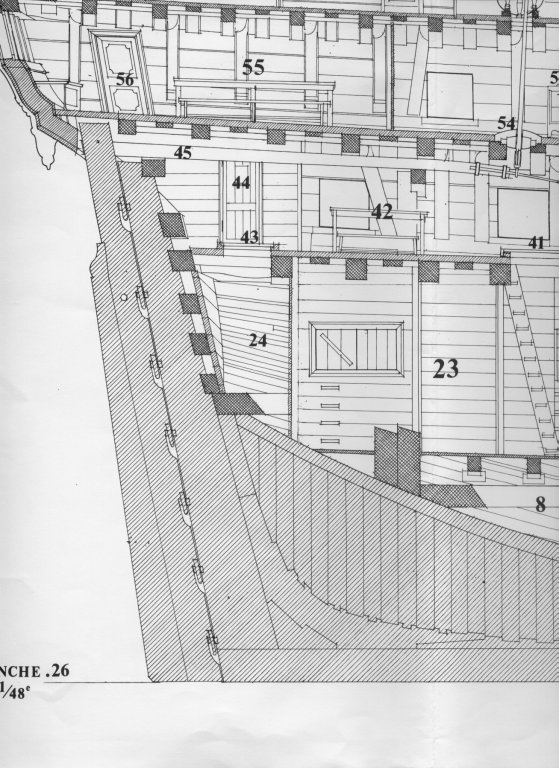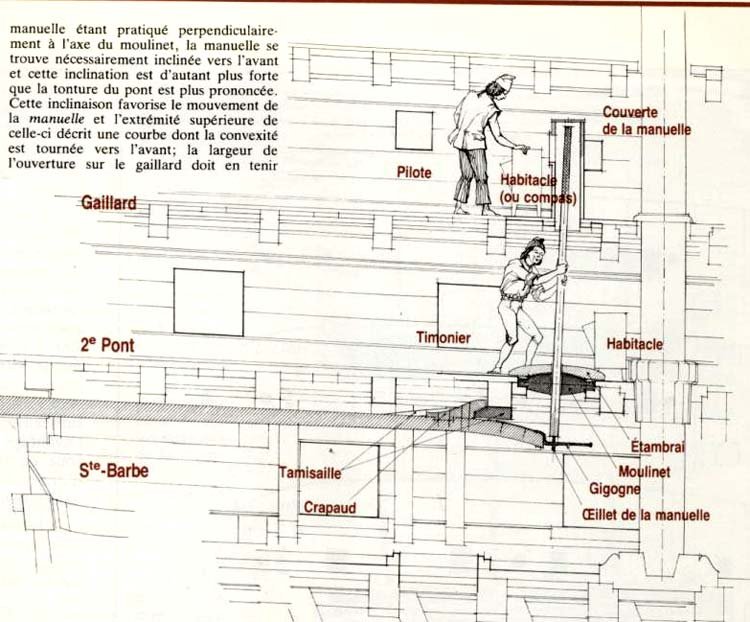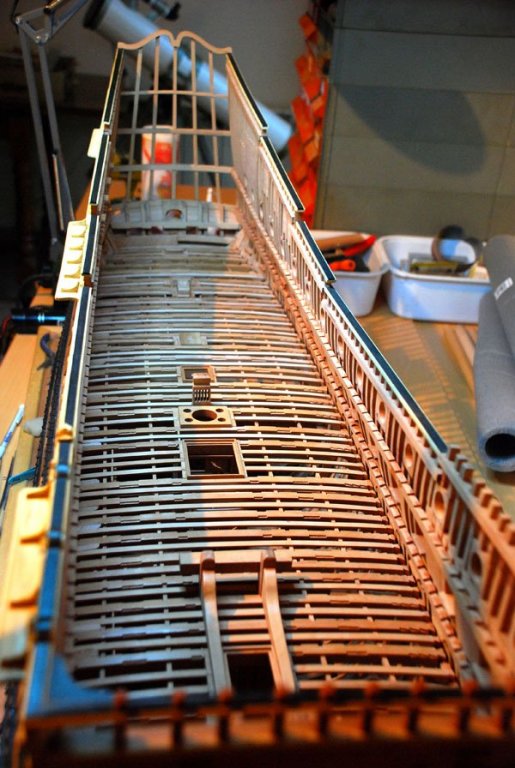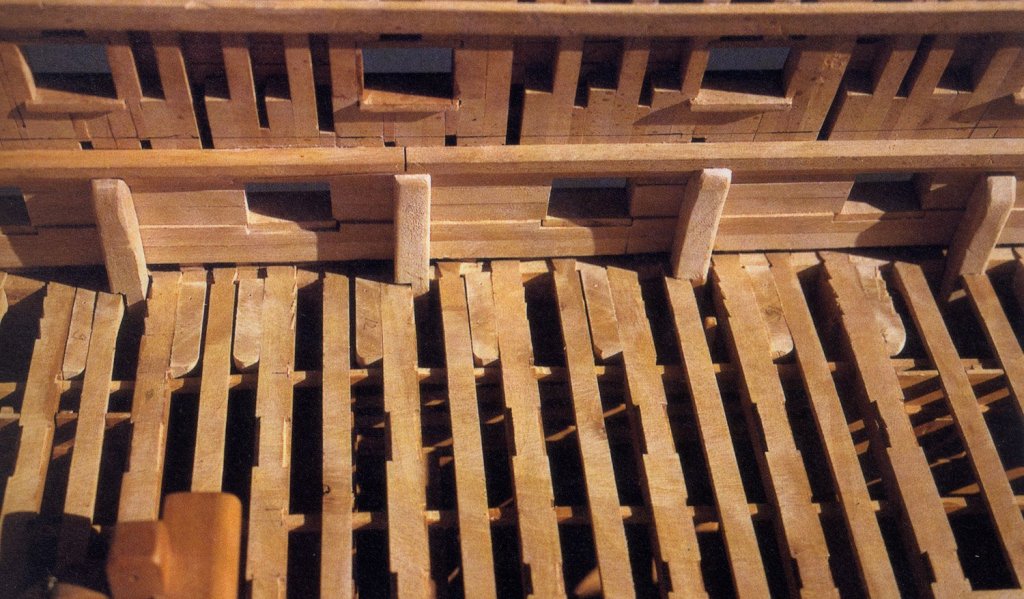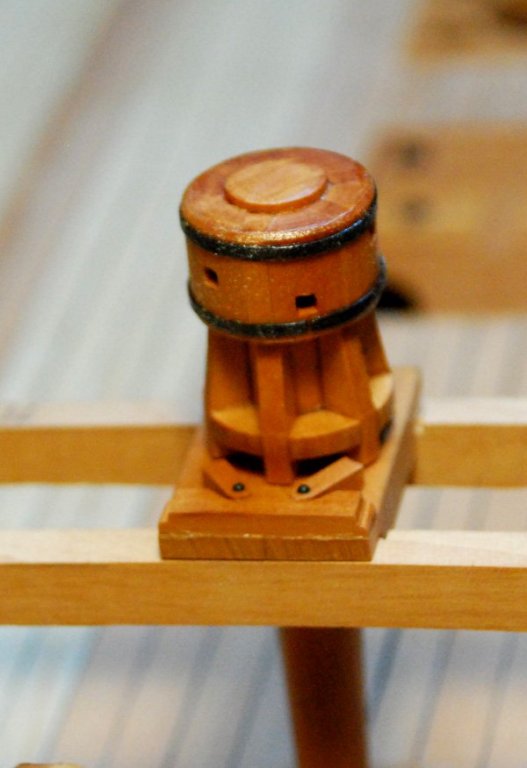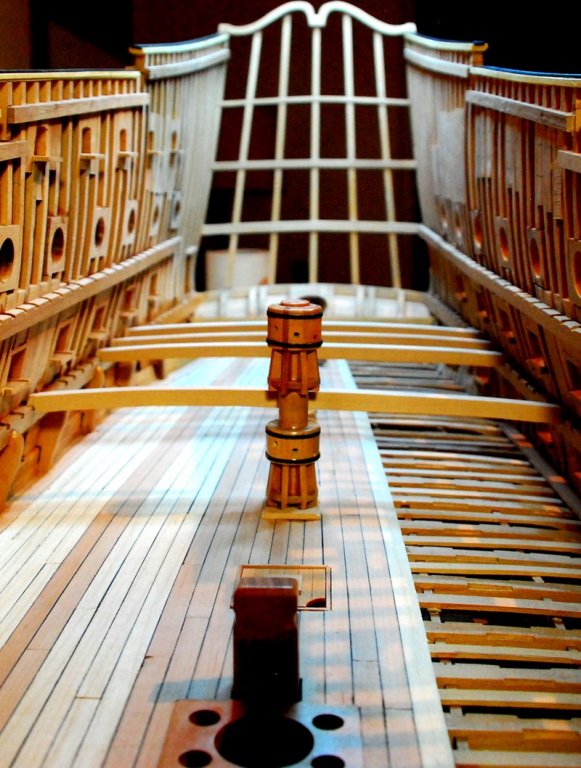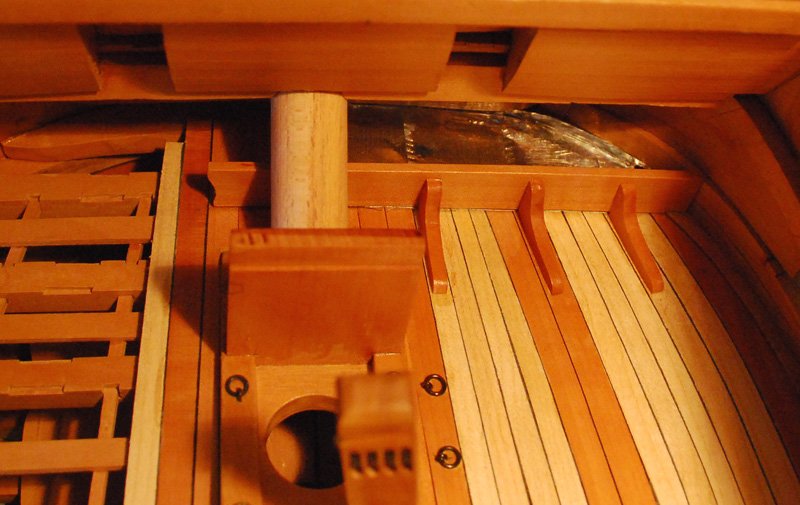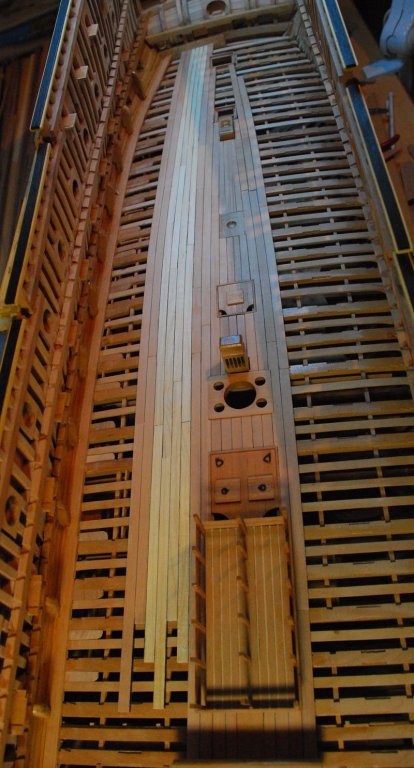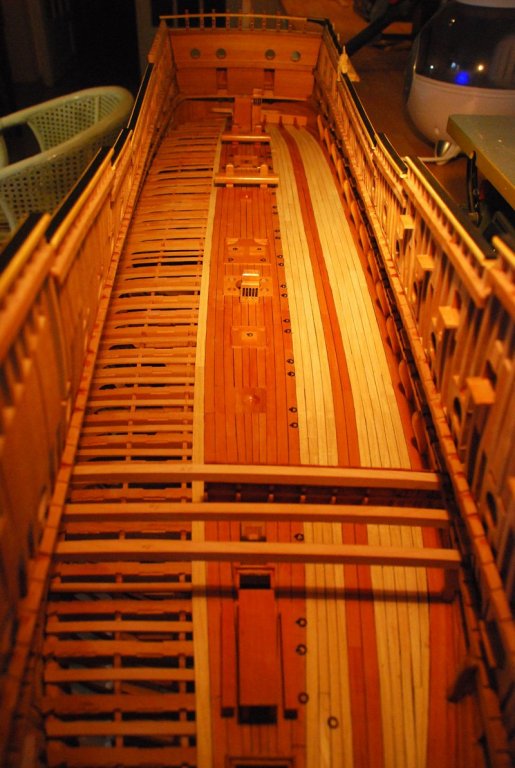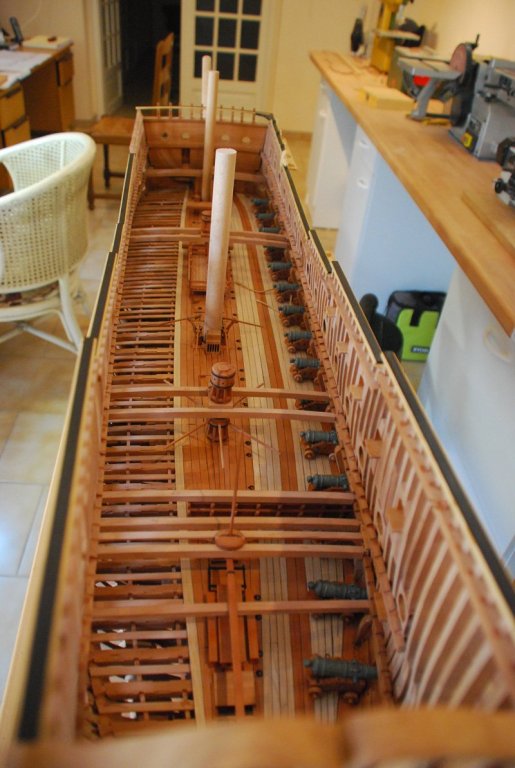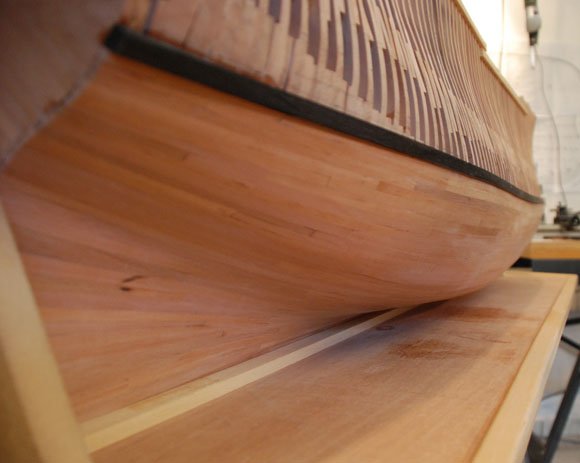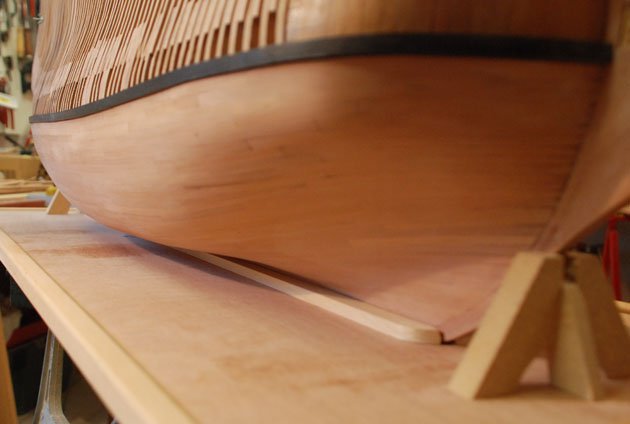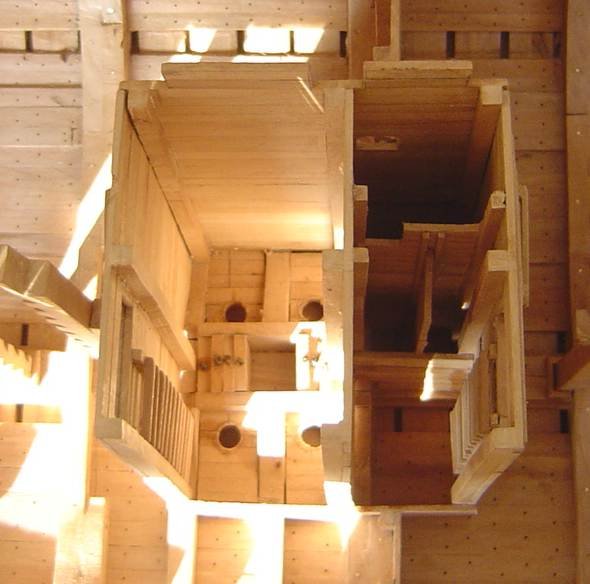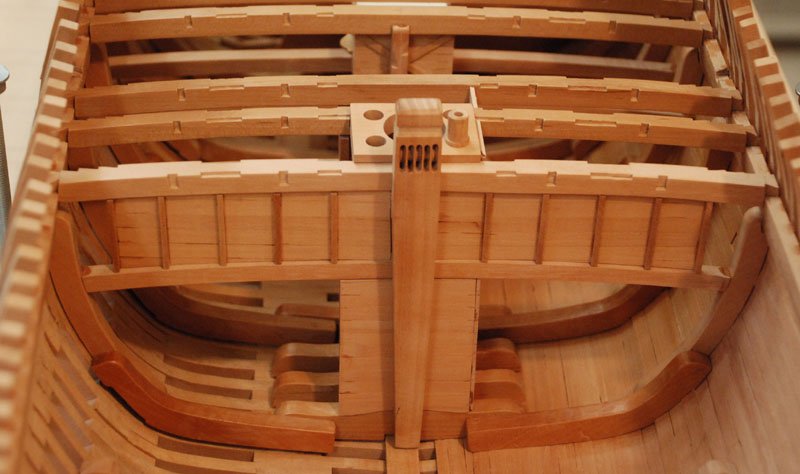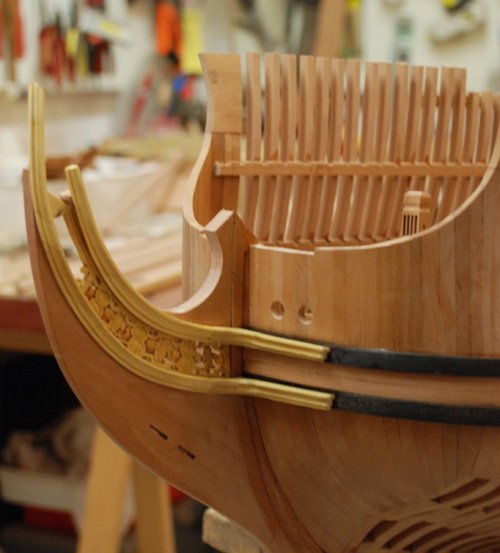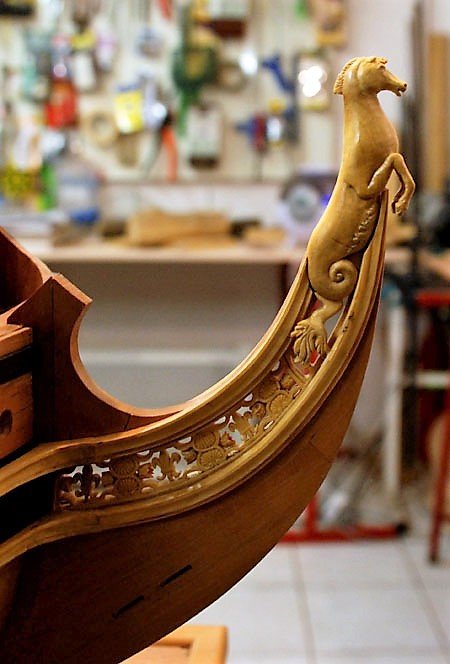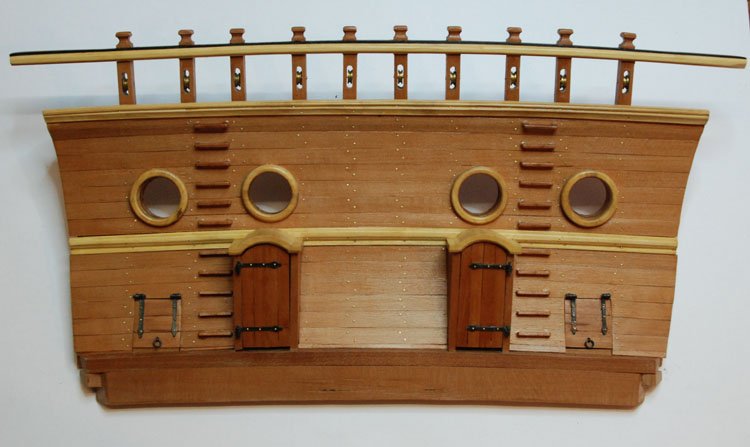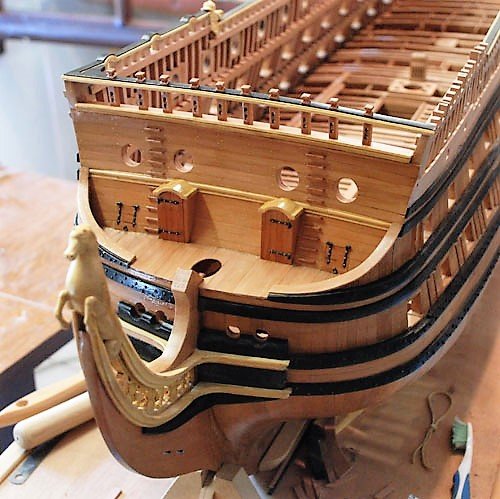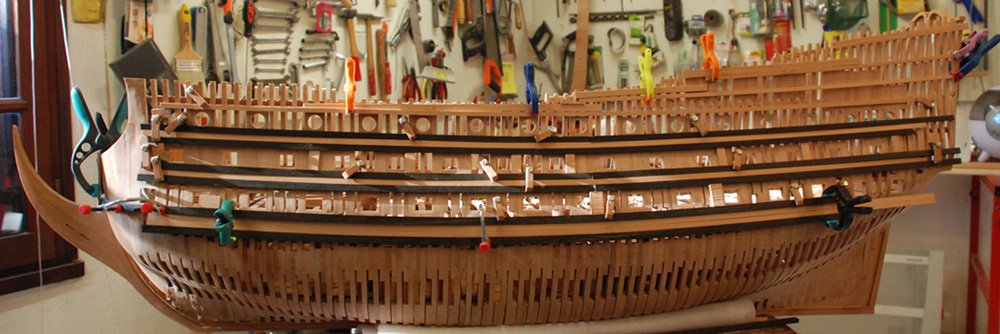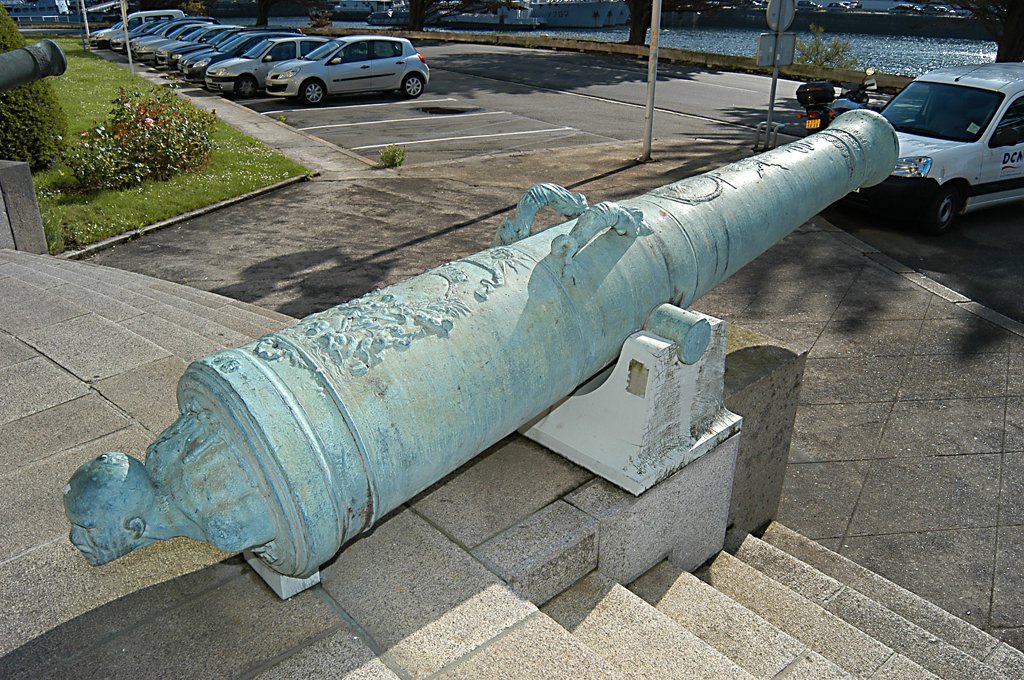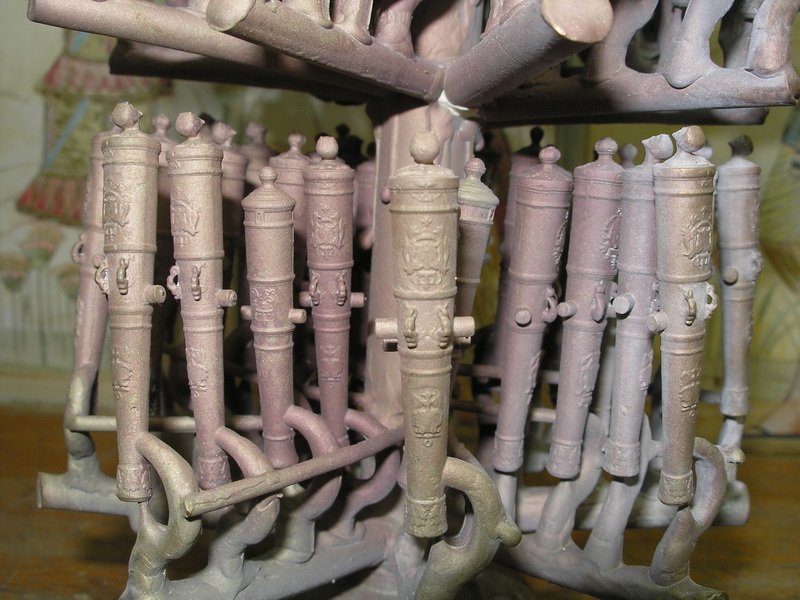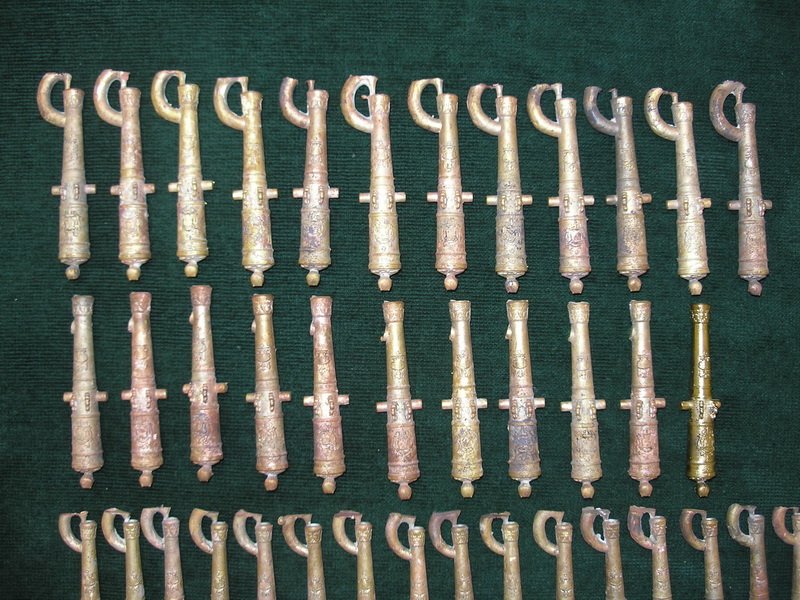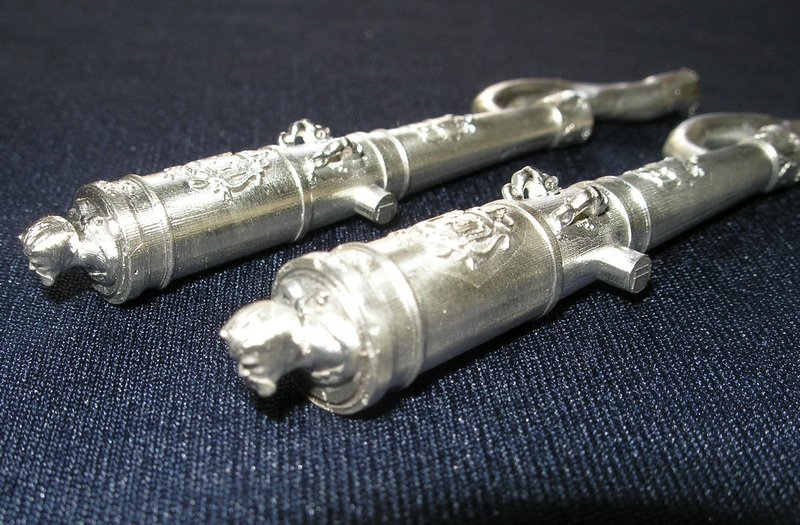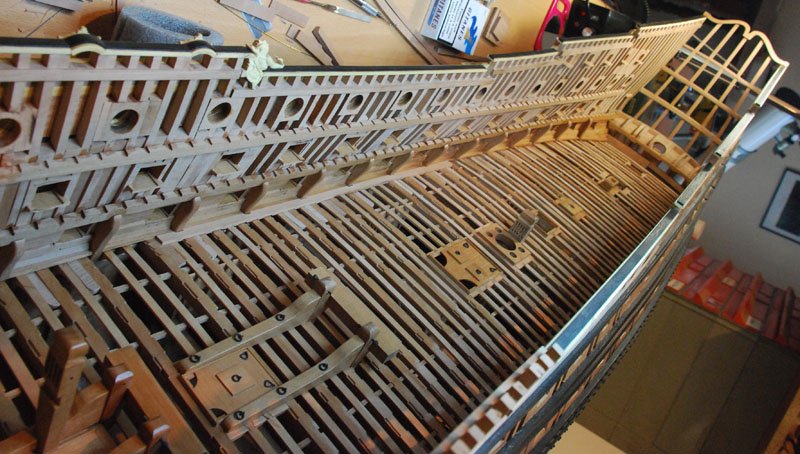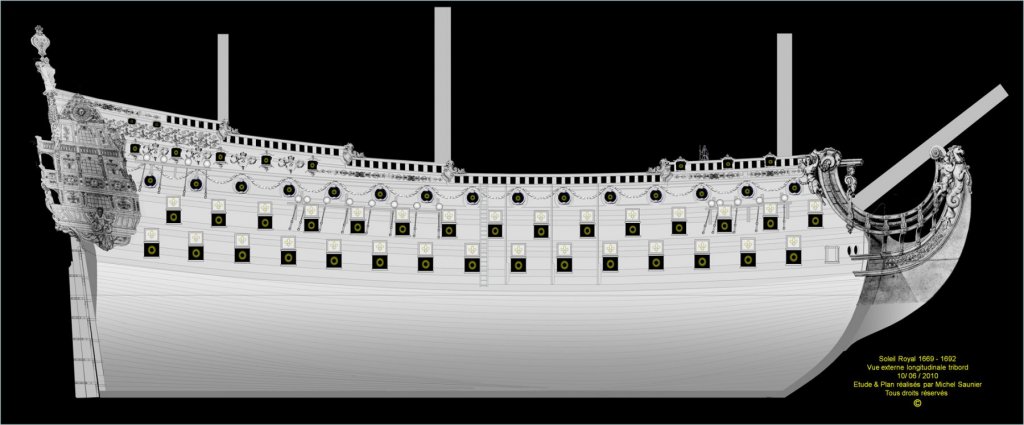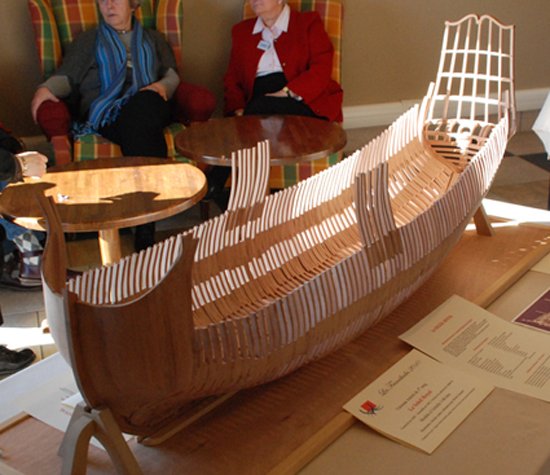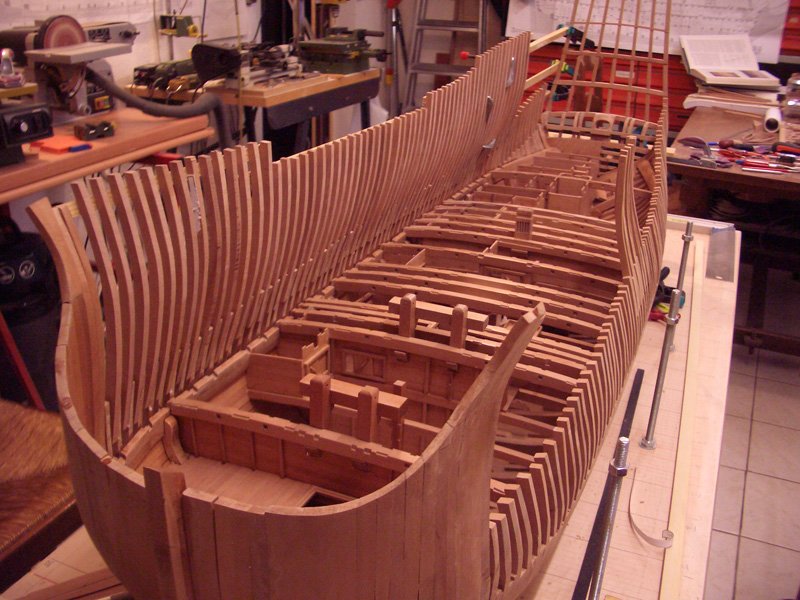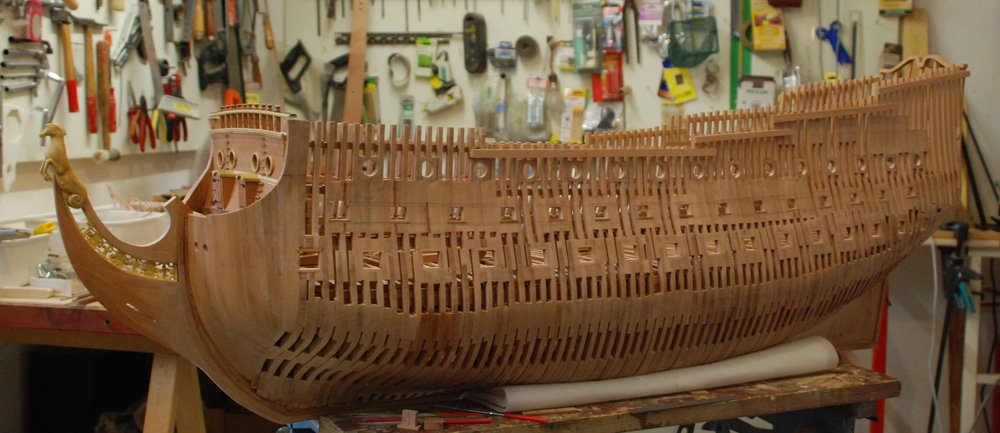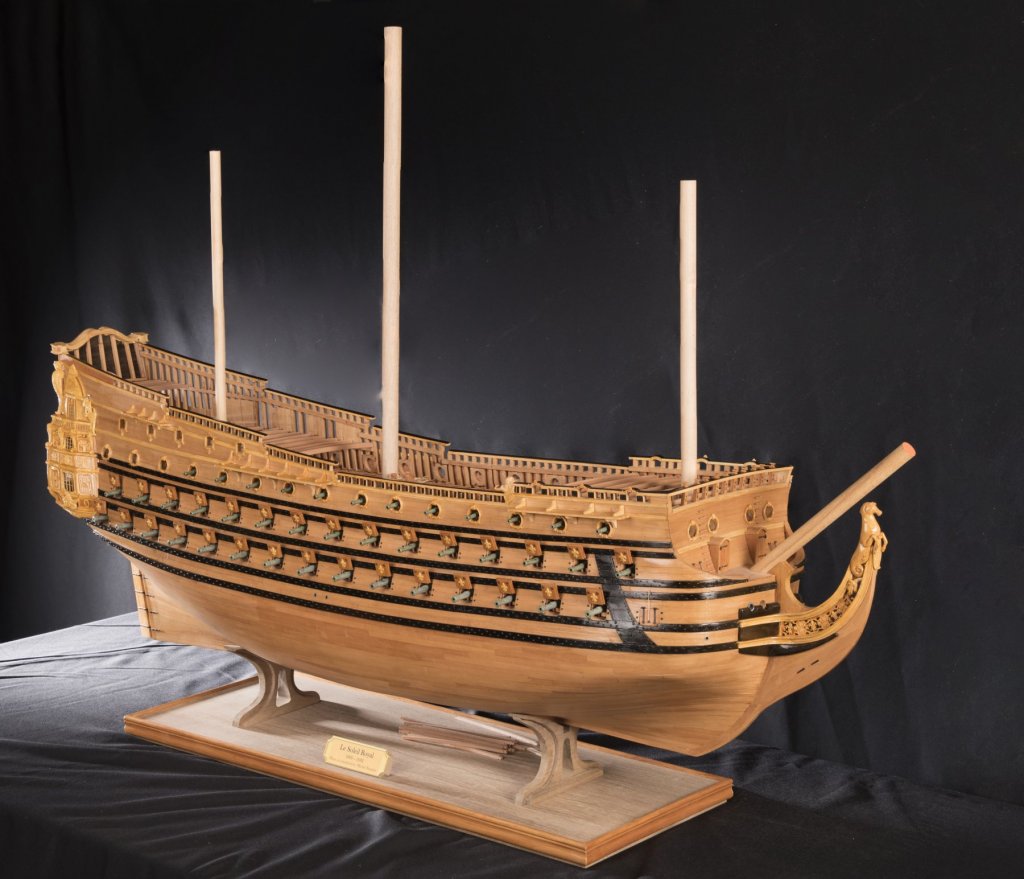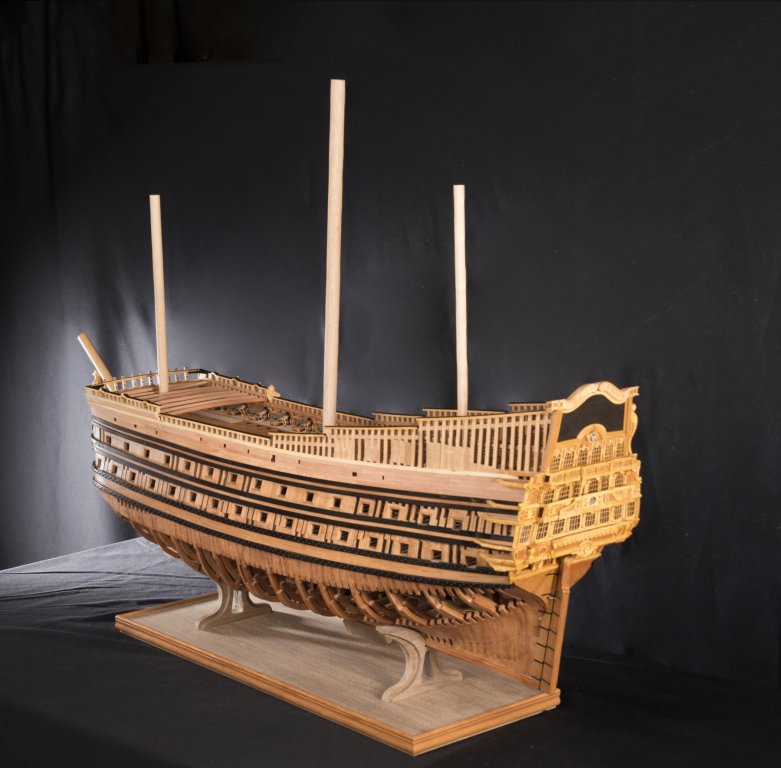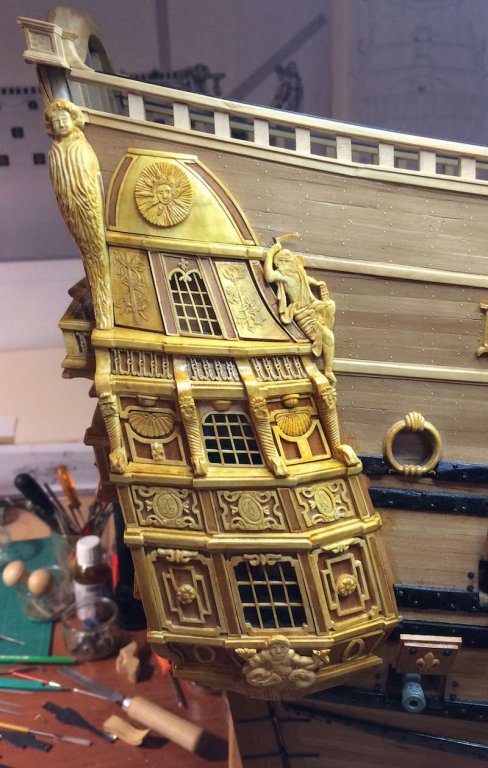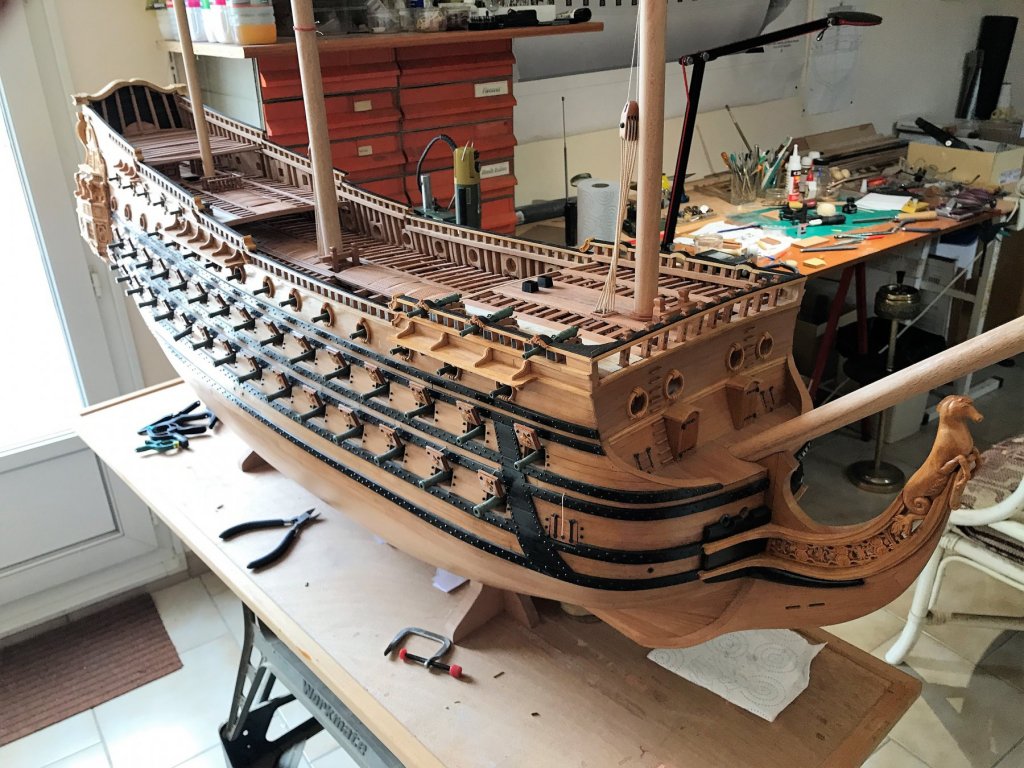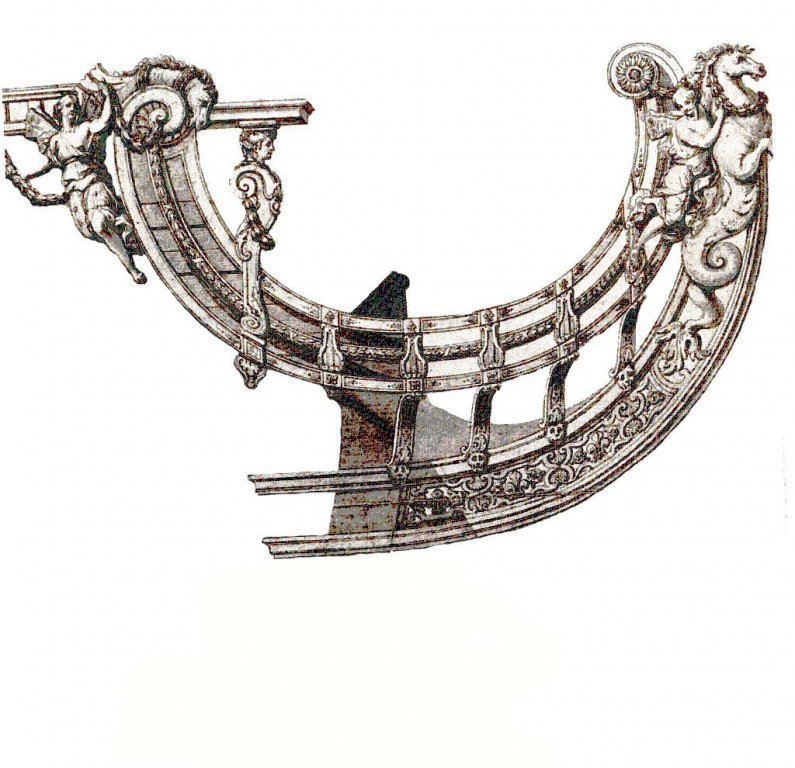-
Posts
51 -
Joined
-
Last visited
Content Type
Profiles
Forums
Gallery
Events
Everything posted by michel saunier
-
I return to you after an absence due to holidays and other occupations in my large property. I resume construction these days on the prow with the manufacture of herpes as well as their decors. I know I'm not going very fast but it's a pastime passion and not work on the chain. The opposite will be a constraint. Thank you, Mario, for your compliments. So very soon for new photos of the progress of the work cordially Michel
-
Let's talk a little about the portholes of the first two batteries. There are 30 of them. These mantles are made of two layers of curling (of the wall) crisscrossed and studded. In principle there are about 100 nails per mantelet. I have somewhat reduced the number for convenience. On the inside of the mantles was painted a fleur-de-lis in yellow from Naples. Despite my multiple attempts the result was not convincing, so I decided to make these Lilies carved in yellow boxwood. They are 5/10 th thick in the center and less than 2 to 3/10 in the edges. The hinges and hinges are made of blackened brass as well as the closing rings. The rope which one does not see and which is behind crosses the wall and runs along the leases of the upper deck. This is called an Itague. On either side of the port of the iron rods with washer and key run through the wall to have at their end hooks or loop which serve to ammarate the hoist of the guns. This set took great stroke of time and patience to be Built. On the last photograph we can see all the device for ammaring the cannons, the brague which crosses the shield and which is used to brake the recoil of the barrel during firing, the two hoists which bring the barrel once loaded to the wall, The corner of sight with its handle to adjust the inclination of the barrel. We even guess the canons of the second bridge.
-
We'll look a little bit at the accessories. Many are repetitive and represent a work almost to the chain. Hints or tips to avoid this hassle. The 16 upper and lower hats of the portholes of the fellows. They are the result of milling of a bar in general shape, then at the end sculpture with the scalpel and needle files, finally sawing, thickness by sanding back, and we start again. The 15 sets of the third battery ports. Getting quasi perfect circles would be very long, and as I am old and slow then let's be crazy, work with the techniques of our time. So a draft in CNC milling machine (a friend of mine knows how to do this, thank you Luc) and pick up the scenery and needle files. For the nailing of the pre-pleats on each chord, like the finer one of the vertical wall above, there is no way to do otherwise by working by hand. 2000 nails with orange head in three dimensions on the three pairs of pre-wires, one pierces, one sticks, next! ! ! And for the nails of 0.6 without brass head hardens, more than 3000, one drills, one engages the clamp that cuts flush. Needless to say, we have to do this on a virgin wall of all scenery and then sanding the whole. I do not show the wall studded because one sees almost the nails that the nose on it. But the result of these punishments is there too. For the portholes is another story See you soon
-
Hello Cedric and thank you for compliments The Grace Harbor document perfectly corresponds to the structure of the Royal Sun. And since the estimate made by Etienne Hubac of the refit of the SR confirms it little doubt is permitted. The date of the refit of the SR is well confirmed elsewhere by the Intendant Desclouzeaux in its relations with Colbert and Colbert de Seignelay. And it corresponds well to the survey of Le Havre de Grace. However, as Hubac built the Queen before the SR, it is possible that he adopted the same framework for both. I would be happy to discuss it with you. cordially Michel
-
In fact I wanted, challenged by my MMB forum friends, to create a quet that approximates that of the SR. These parquet floors are called "Versailles". So I created a block of alternate wood slats and then grinded into the milling machine, in several layers to get what you see. Then sawing of lamellae of this block, finishing each one (thickness 5 / 0th of mm), assembly and gluing on a thick paper to the dimensions of the piece, finally the assembly glued on the bridge. I am quite satisfied with the result that, alas, we will not see any more because the aft fellow comes to hide everything.
-
Let us now turn to the second and third bridges. We will always find the same basic structure of the framework. The arrangements differ as we shall see by their wealth. The third bridge will be visible in part because it is masked by the front and back fellows. It has a peculiarity that are the flats of the Admiral. The latter contained an unprecedented luxury for the period of painted decors, precious furniture, carpets and a parquet flooring plated on the edges of the bridge. The structure includes a series of gratings to allow ventilation of previous bridges (such as the second bridge). Indeed during the battles, the firing of the guns emitted an intense smoke that it was necessary to be able to evacuate. The leases you see above this bridge are those sketched out by the fellows and the poop. The guns are set up and equipped with their hoists, tacks, braches. Through the partial opening of the bridge one can see the arms of the great capstan. The masts are fictitious at the moment. Photos of details show these guns to post. Here are the amenities of the Admiral's apartments on starboard Entrance wall from the bridge with its wrought doors Front view Rear top view The large room (14m x 9m) with its walls worked, the chests, the paintings (I did not reproduce those original!)
-
Let us go back in detail to this back part of the funds. On this view you can see: The "Manual" which served the helmsman to orient the rudder according to the orders. This device of use in the XVIIth century will be replaced by the double wheel better known. This vertical lever was articulated in a nut and moving it from right and left pushing it made the helm of the rudder visible. A double partition supposed to insulate this rear compartment or "Sainte-Barbe" includes supports where were hung the powder gargoyes. A table and benches for cannoniers and one also sees the traps giving access to the powder tanks. A section of this section provides a better understanding of these developments. It is a piece of the plans of the Ambitious of Monsieur Jean Boudriot. This ship built at the same time as the SR and like him in Brest undoubtedly had the same facilities
-
et's go to the first bridge or first battery. The main structure is finished with: leases, beams, reinforcement curves, bolsters, hatches stacked masts ... In this detail, we can distinguish the leases and barracks, the corbes, the portico extensions, the ceiling of the wall, the sills of the next bridge and their seals, the bolsters which keep the gaps between the leases and the notches on the leases To accommodate future curling coamings. Then the small capstan with single bell and the large capstan with double bell. Then at the prow is the Gatte, a compartment in the form of a bin pushed back in lead sheets to receive the waters resulting from the retraction of the anchor cables. Scuppers on both sides allow the flow to the sea. In the foreground the vertical bolster of the bowsprit mast The curbing of the first bridge is short. The coamings are in pear tree as well as the central part, the rest of the bridge in sycamore (French maple). Aesthetic reason, but also because during the scratching of the oak bridges with sea water the salt in the long time bleached the wood. Operation called "Briquettage" because one scratched with bricks of terracotta. In the foreground one sees the sheep park followed by the large hatch. The curbing of the bridge is completed on the starboard side, the port side is left open to see the structural work. The equipment is in place and we make a first presentation of the guns of 36.
-
The curbing of the hull or lively work is a long and meticulous exercise. The slats are calculated in width and length to respect certain principles: None of the curbs should end in whistle or tip. No joints on chords should be on the same chord with less than three gaps. The edges are skewed on edge to stick well to the bottom .... but you know that of course. Operation of more than one month. The same will apply to the felling of dead works
-
Some details of the internal structures before going over the bridges. On this view, we can clearly see the pumps at the pumps, the mast-gauge stand with the holds to regulate the quest, and the ladders to access it. On the right the well with balls Then a view of the large halyard and the large wall. At the bottom the porques, alternate members which consolidate the hull by the interior Another view of the rear part of the bulkheads, floor of the master-valet, the Commandant's provisions. Left the stern of the large capstan.
-
You are right, the Beautiful is a beautiful little frigate as well as Fame. Let's make a small break by the sculpture of the elements of the prow The jottereaux are in place on the spur and the frieze is carved. Then a few steps of the sculpture of the marine horse, it was my first sculpture and I have to make touching soon. The frieze, which is very fragile, required three weeks of work The following coltis border was quite complex to make. The doors are functional and the brass sheaves at the top of the pediment are also functional Thank you and later.
-
Let's continue the construction detail On this view we distinguish: The bread oven The main mast The passages of the bilge pumps and a pump The puit aux boulets and its entrance by a sliding trapdoor The great sep of halyard On the second picture the three pairs of ebony loudspeakers are positioned before gluing Next picture the pecks are glued in place. The rounded parts at the bow are cut in the ebony mass because this wood breaks with the cambering.
-
Thank you Mark and good Sunday You know, doing the rigging with the cargoed sails for part will be a very long adventure. I think it will take me at least two years if I believe my friends of the Forum of Gérard Delacroix. Besides I have big fingers at times not very skilled. When to do another boat, why not but then which one? Are the translations good? I try to express myself in simple words. I will continue my story if it interests you and your friends. Have a good day cordially Michel
-
I continue my description: The cannons: 15 guns of 36 on each edge in first battery 15 guns of 18 on each edge of second battery 15 guns of 12 on each edge of third battery 5 guns of 8 on each edge of the aft deck 3 guns of 8 on the castle of before 2 guns of 4 on the poop on each edge A total of 110 canons all in Bronze. I remind you that the portholes of retreat and hunting ports were not armed as well as the first port of the first battery. These cannons were decorated with the arms of the Count de Vermandois, the baton of King Louis XIV. They also featured a wildlife head with a breech button. Not finding in France a competent workshop and a reasonable price to melt them, I turned to Alexey Baranov, an engineer from Ukraine who accepted the challenge. Only Tribord will be armed, Port being not decorated to let the work of framing. These guns were modeled on a 3D milling machine and then cast by the process of lost wax. Then trimmed and polished. I applied a treatment later to give them the appearance of verdigris. All are mounted on their hooks and rigged with maneuvers hoists and fixed against their respective ports. This picture shows one of these 24 guns that equip the Royal Sun No. 2 of 1693, sunk at the Battle of the Cardinals
-
good morning Marc I took more than four years to complete all the internal structures and the first bridges. As will be seen in other photographs, the bridges with notched dovetail leases against the walls are as numerous as the pairs and each one carries numerous assembly notches. This framework, for the time, was very astute and admirable resistance. Everything was nailed, pegged, no glue or screws or bolts. What is also remarkable is that the construction of the ship required only a little less than two years. 5000 workers of all the trades animated this site. More than 3000 very large oaks were necessary without counting the woods needed for the mature. Yes, I think to do all the rigging if by then the great author of the cosmos gives me time. That is to say a little more than 4 years to see 5. Good day Marc
-
Some details on this structure of the framework. Each chord or "couple" has 7 pieces: a veranda on the keel, two knees, two first elongates, two second elongates. These pieces are assembled in staggered form and are of decreasing thickness to lighten as much as possible the tops of the vessel ..Sa nearly 700 pieces to carve in the respect of the dimensions of the time and the 1 / 48th. Preparations are done on the table with templates from the plan. It is therefore a very very long and somewhat tedious work, but necessary. Some "fillings" are necessary between the meshes at the places where it will be necessary to pierce the ports of the three main batteries. All the "bottoms" of the aisseau are equipped with false bridges, floors, partitions of the various equipments as in the real ship.
-
Thank you for your nice comments. I introduce myself: I am an engineer of Arts and Crafts and I have always done a little modeling during my life parallel to my job. I am married, I have three children and six grandchildren. I'm 76 years old. In retirement since 1998 I accidentally fell on the drawing of the stern of the Royal Sun, drawing by Jean Berain. Immediately I was seduced and I decided to build this ship in Arsenal. I started my research in 2008 by browsing the historical backgrounds in search of exact documents on the Royal Sun. My object was to compile all these documents in order to have enough to draw up the plans of this ship as well as possible. This was done in 2009. It was a first approach that was to guide the construction while allowing the retouching as and when. The axial framework with more than 90 frames and the stern and stern frame will be presented at an exhibition in January 2010. Photos of this period:
-
- 2,696 replies
-
- heller
- soleil royal
-
(and 9 more)
Tagged with:
About us
Modelshipworld - Advancing Ship Modeling through Research
SSL Secured
Your security is important for us so this Website is SSL-Secured
NRG Mailing Address
Nautical Research Guild
237 South Lincoln Street
Westmont IL, 60559-1917
Model Ship World ® and the MSW logo are Registered Trademarks, and belong to the Nautical Research Guild (United States Patent and Trademark Office: No. 6,929,264 & No. 6,929,274, registered Dec. 20, 2022)
Helpful Links
About the NRG
If you enjoy building ship models that are historically accurate as well as beautiful, then The Nautical Research Guild (NRG) is just right for you.
The Guild is a non-profit educational organization whose mission is to “Advance Ship Modeling Through Research”. We provide support to our members in their efforts to raise the quality of their model ships.
The Nautical Research Guild has published our world-renowned quarterly magazine, The Nautical Research Journal, since 1955. The pages of the Journal are full of articles by accomplished ship modelers who show you how they create those exquisite details on their models, and by maritime historians who show you the correct details to build. The Journal is available in both print and digital editions. Go to the NRG web site (www.thenrg.org) to download a complimentary digital copy of the Journal. The NRG also publishes plan sets, books and compilations of back issues of the Journal and the former Ships in Scale and Model Ship Builder magazines.



